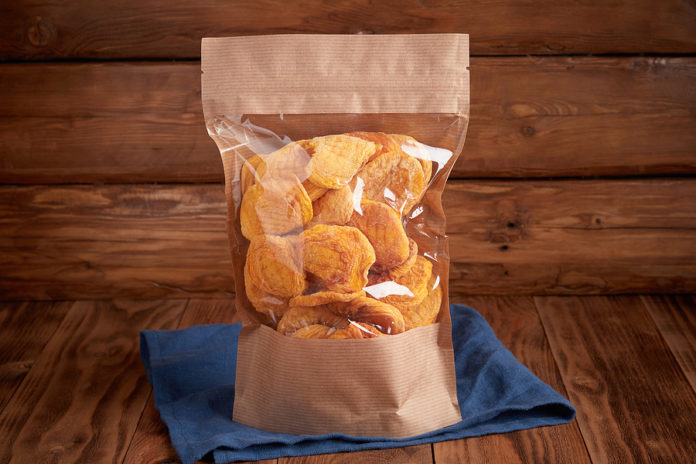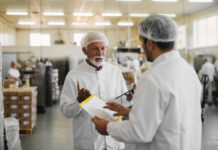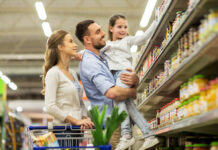
By Charles Haverfield, Packaging Executive for U.S. Packaging & Wrapping
Nestle recently announced a packaging makeover for one of its most recognizable products, KitKat. In Australia, the sweet treat will be trialed with recyclable paper wrappers as part of the company’s pledge to slash the use of virgin plastics by a third by 2025.
Nestle isn’t alone – other FMCG brands have begun migrating to paper-based alternatives as consumer demand for sustainable packaging alternatives soars.
I explore whether paper-based alternatives are the best long-term solution over traditional plastic packaging for food products.
Meeting food preservation requirements
On the surface, paper food packaging seems like the more environmentally friendly option for its biodegradable properties. However, food packaging manufacturers need to consider whether paper-based alternatives can realistically match, or even exceed, plastic packaging for food preservation without impacting its sustainable credentials.
Paper packaging has poorer barrier properties than plastic, making food products more susceptible to light, oxygen, and microbial degradation. To combat this, paper packaging manufacturers have previously resorted to additional coatings, typically plastic film, aluminum, or chemical coatings (PFAS). While these do provide the necessary protections for food preservation, these added coatings render paper packaging neither biodegradable nor recyclable.
Additionally, the banning of harmful PFAS is something many states are adopting throughout 2023 – New York, Maine, California, Pennsylvania, and Colorado have already enacted PFAS bans and restrictions, with other states expected to follow suit. While this has a wider impact on many household goods, including cosmetics, cleaning products, water-repellent clothing, and non-stick coatings for cookware, etc., it directly affects paper food packaging that relies on PFAS to prevent packaging degradation from grease and liquid.
In response to this, emerging technologies are hoping to provide improved barrier solutions for paper packaging. For example, water-based dispersion coatings are currently in development that aim to allow paper packaging to be fully recycled without separation processes while providing resistance to liquid and grease.
However, until these new technologies can be thoroughly tested in a practical sense, it will be some time before the industry experiences widespread uptake of 100% paper-based packaging.
Balancing costs
Businesses want to get the most bang for their buck. And when it comes to packaging, design and materials will inevitably be dominated by cost.
Plastic remains the most popular choice for many brands thanks to its durability, versatility, and cost-effectiveness. On top of being one of the most efficient materials for protecting food products, plastic also uses less energy to manufacture than alternative packaging. Additionally, it is lightweight and easy to transport, lowering shipping costs and emissions.
However, the environmental cost of plastic waste cannot be understated. A recent report found that the world generated a record 139 million tons of single-use plastic waste in 2021 alone. The amount of plastic waste produced globally is also projected to triple to 1,231 million tons by 2060 according to the OECD.
As a result, governments have introduced targets to limit the volume of single-use plastic being produced. California became the first U.S. state to impose restrictions last year, requiring all non-recyclable or compostable single-use plastics to be phased out by 2032, as well as a 25% reduction in plastic packaging sales.
Overseas, governments have set new regulations to tackle plastic packaging waste at a national level, such as the UK’s Plastic Packaging Tax as well as its widespread ban on a select number of single-use plastics coming into effect in October 2023.
Should the U.S. follow other countries in issuing regulations against plastics, paper-based packaging could provide a cost-effective solution. And with 86% of under 45s willing to pay more for sustainably packaged products, brands may not be able to afford to miss out on catering to this new conscientious consumer.
Maintaining brand identity
First impressions matter, particularly when it comes to branding. For most consumers, the packaging is the first interaction with a brand’s product and can make or break a sale.
Many brands rely on their packaging and particularly the look and feel of a product to attract and retain customers. Take Campbell Soup as an example, which has made very few design changes to its iconic canned soups since they were famously painted by Andy Warhol in the 60s. Its latest design changes in 2021 were so minuscule, many consumers didn’t even notice.
While most consumers will welcome sustainable packaging initiatives, manufacturers will have to carefully consider how to avoid compromising brand identity when changing packaging.
For example, Nestle’s Quality Street chocolates – a beloved candy in the UK – faced backlash last year for changing its iconic packaging from colorful, shiny dual aluminum foil and cellulose to vegetable-based recyclable paper wrappers. In spite of this change preventing almost 2.5 billion wrappers from entering landfill, customers still flocked to Twitter to voice their disapproval, highlighting the emotional attachment many hold for their favorite products.
However, according to a recent report, three out of four U.S. consumers would prefer brands to use paper packaging instead of plastic. With today’s environmentally conscious consumer dictating market trends, it’s unsurprising we’re seeing more brands successfully begin to make the move to paper alternatives.
Outside of the food industry, brands have seen great success switching to recyclable paper packaging. L’Oreal brand La Roche-Posay achieved a global first in 2020 by developing a cardboard tube for its Anthelios sunscreen, reducing plastic production by 45%. L’Oreal has since announced its paper packaging will be expanded across its portfolio of brands.
However, it’s important to note this packaging does still require some plastic to protect the product. It may be some time before we see 100% paper-based packaging and longer yet before this translates widespread across the food packaging industry.
 Charles Haverfield is the CEO of U.S. Packaging & Wrapping – a full-service, customer-driven packaging supply company. Headquartered in Central Arkansas with shipping warehouses on the east and west coast, U.S. Packaging & Wrapping strives for fast and affordable shipping. Learn more at https://uspackagingandwrapping.com/
Charles Haverfield is the CEO of U.S. Packaging & Wrapping – a full-service, customer-driven packaging supply company. Headquartered in Central Arkansas with shipping warehouses on the east and west coast, U.S. Packaging & Wrapping strives for fast and affordable shipping. Learn more at https://uspackagingandwrapping.com/







